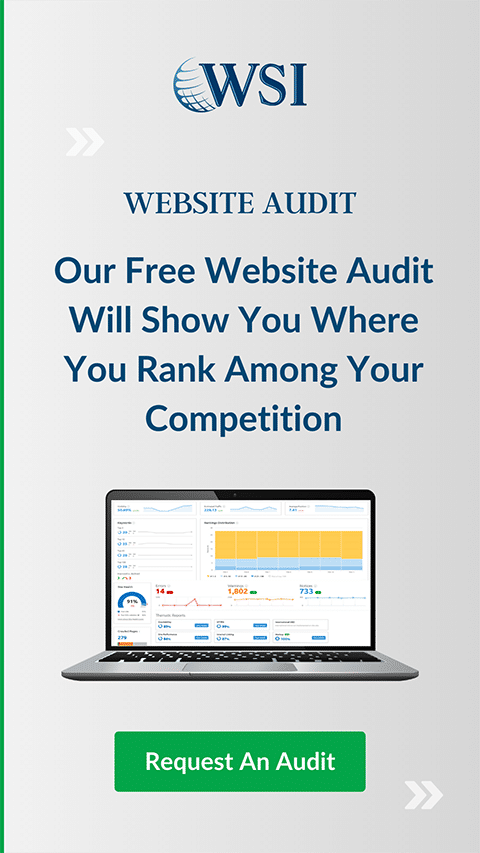Remarketing vs Retargeting: How Are They Different?
Oct 10, 2022 | 7 MINUTES TO READ

Summary: While remarketing and retargeting are often used interchangeably, they are different approaches. Learning the difference and which is best for you can help.
If you have spent time learning about digital marketing, you may have heard the terms remarketing and retargeting. These terms are often used interchangeably, but in the strictest sense, they describe completely different marketing approaches.
Distinguishing between these two terms is critical to implementing advanced marketing techniques that power truly impressive gains in market share. Keep reading to learn more about what makes these approaches different, how to use each one to its best advantage, and how to determine which is best for your needs.
Table of Contents
Remarketing vs. Retargeting: How Are They Different?
The main thing that differentiates remarketing from retargeting is their audiences. Both techniques aim to increase engagement, but because they are aimed at different types of consumers, the specifics of each strategy are very different.
- Remarketing is digital marketing that is aimed at people who are already customers or have shown heavy interest in your specific brand.
- Retargeting is aimed at people who are interested in products like yours and who might become new leads in the future.
Either approach can be used to build a business’ customer base and increase its revenue. However, each requires a different mindset and array of marketing tools.
What Is Remarketing?
The definitions above offer a basic idea of what makes remarketing and retargeting different. Exploring the concepts in deeper depth will help you understand what makes them effective and how to put them to work for your business.
As mentioned, remarketing is a specific type of email marketing that aims to get subscribers and past customers to re-engage with your business.
People who have given you their email address or purchased from you before are demonstrably interested in your brand. This means that they are much more likely to purchase from you in the future than your average lead.
The goal of remarketing is to tie that interest to specific products you offer and get your leads thinking about making that next purchase. These items could be ones they have already interacted with or brand new items that are aligned with their apparent tastes or goals.
For instance, you might send leads remarketing emails based on:
- Items they put in their cart but have not yet purchased
- Items that are similar or related to ones they have purchased in the past
- Items they have just purchased
- Items that are on their wishlist
You can only use remarketing tactics on leads who have given you their email address, making this form of marketing more limited than its rival. However, while remarketing may be harder to initiate, it usually generates much more revenue. This makes it more than worth the investment needed to put it into action.
How Does Remarketing Work?
To use remarketing strategies effectively, you will need to use both pixels and lists. You will also need a good piece of marketing automation software to help you administrate your remarketing strategies.
Pixels are tiny fragments of code that track each user’s interactions with your brand while they are visiting your website. For example, pixels can tell you which items a customer browsed, how long they spent on the product page, and even whether they put that item in their virtual cart.
Once you have this valuable customer information, you can use it to sort your leads into remarketing lists. These lists group your leads into categories based on their site activities. Users with similar activity are grouped together. These categories then determine what kind of email is needed to convince those leads to spend more time with your brand.
This is where your marketing automation software can help. Most marketing software can generate these lists automatically based on the information your pixels have collected. Once this is done, it can automatically personalize and send the right type of email to each subscriber at the optimal time.
Remarketing is fairly easy for even novice marketers to accomplish with the right tools, but it may take some technical knowledge to configure your website code and marketing software properly. If you are not comfortable doing this yourself, consider hiring a digital marketing company to do it for you.
What Is Retargeting?
Retargeting, on the other hand, is the process of stoking interest in leads based on their browsing activity on your site.
In some cases, you may also be able to access a lead’s browsing data on other sites during this process. However, privacy laws have imposed some limitations on this practice. You will usually only be able to track a user’s browsing data within specific virtual ecosystems, such as the Google family of over 200 million websites, apps, and platforms. This family includes YouTube, Gmail, and of course, Google itself.
Retargeting focuses on leads who are in the early stage of their buyer’s journey. They are looking for products similar to yours and may be considering purchasing from you, but they have not bought anything or subscribed to your email list yet. Your retargeting efforts should be geared toward changing this.
Remember, retargeting ads only pique leads’ interest – they do not close sales on their own. Be sure to compliment them with a robust content marketing strategy and expertly crafted product descriptions. Hiring a PPC agency in Toronto is a good way to make sure that your company can capitalize on the opportunities that retargeting ads present. Not only will they be able to help you create exceptional PPC ads that are optimized for conversions, but they will likely also offer other services you can use to set your website (and by extension, your business) up for success.
How Does Retargeting Work?
Retargeting also uses pixels to acquire the information it needs to succeed. In this case, pixels are employed to track browsing activity both on and off your website. This information is then used to automatically display personalized, relevant ads on networks like the Google Display Network. These ads are usually paid for using a pay-per-click (PPC) system, so you will not have to pay for them until someone clicks on one of them.
Retargeting is largely an automated process, but you will still need to craft your PPC ads carefully to maximize your conversions. You will also need to sign up for a particular ad network to receive your retargeting pixel and put this strategy into action, so be sure to sign up well in advance of the date you want to debut your ads.
Once again, some technical and marketing knowledge is needed to make this strategy work. If you lack this knowledge within your internal team, you can always hire a marketing agency to do it for you.
Is Remarketing or Retargeting Better for Your Business?
Remarketing and retargeting both have their strengths and weaknesses. Rather than restrict yourself to just one, it is best to use them together. This combined strategy ensures that you are marketing to consumers in all phases of the buyer’s journey and allows both approaches to shine.
Retargeting is great for capturing leads early on, during the period when most consumers are weighing their options before a purchase. From there, you can nurture these early leads with blog posts, videos, social media posts, and other content that gives them more information about your products. The more you highlight the best points of what you sell, the more likely they are to consider purchasing from you instead of one of your competitors. Small businesses with a brick-and-mortar location can also employ geotargeting in conjunction with retargeting to ensure that their ads are only displayed to users in their geographic area.
Remarketing works wonders for businesses who have spent some time nurturing their leads and are now ready to begin working on conversions. Remarketing emails pull old customers back to your brand for more tempting offers and give subscribers who have not yet become customers a reason to do so.
If you only have the budget for one of these approaches, starting with retargeting is your best bet. After you have used this approach to build up your customer base and gain more email subscribers, you can begin using remarketing to improve customer loyalty and retention over time.
Start Your Email and PPC Advertising Journey Today

Whether you want to employ remarketing, retargeting, or both, you will need the help of an expert digital marketing team to make the most of these high-powered approaches. WSI Comandix has been offering PPC management in Toronto for more than 20 years. Our staff is always up to date on the latest marketing trends, and we will be happy to help you devise a strategy that addresses your business’ unique needs. Contact us today to discuss remarketing, retargeting, or any other digital marketing that you feel will help you meet your business goals.
Don't stop the learning now!
Here are some other blog posts you may be interested in.
VIEW ALL BLOG POSTS-
A Guide to Building a Marketing Tech Stack
Editor’s Note: This post was originally published in October 2019 and has been updated with new content and details for 2021. By now it’s no secret …
READ MORE -
WEBINAR RECAP: 5 Ways to Digitally Transform Your Business in 2021
As the global leader in digital marketing, WSI is proud to introduce one of our consultants to discuss how you can digitally …
READ MORE -
We Launched An eBook Marketing Strategy – Here’s How
Editor’s Note: This post was originally published in August 2017 and has been updated with new content and …
READ MORE









